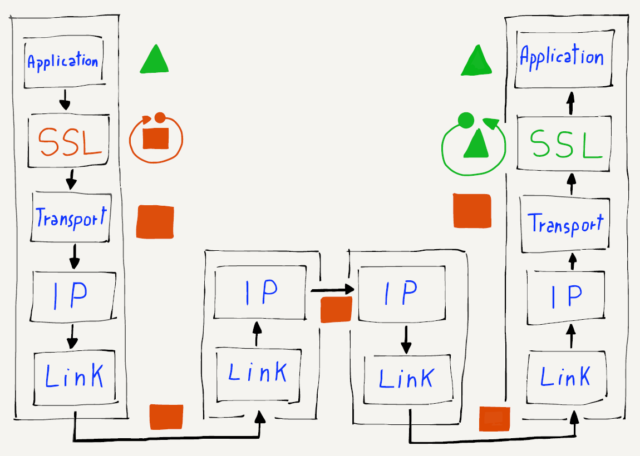Since network engineers decided to add security nearly 20 years after the Internet protocols were developed, it was important not to break any existing Internet protocols or architecture. Their solution was to add an optional partial layer between the Transport layer and the Application layer. They called this partial layer the Secure Sockets Layer (SSL) or Transport Layer Security (TLS).
When an application requested that the Transport layer make a connection to a remote host, it could request that the connection either be encrypted or unencrypted. If an encrypted connection was requested, the Transport layer encrypted the data before breaking the stream into packets. This meant that the Transport layer, Internetwork layer, and physical (link) layers could still perform exactly the same way whether the packets were encrypted or non-encrypted.

The applications making the connections were also spared the details of how encryption and decryption worked.
Since encryption was a simple and transparent addition to the Transport layer, there was no need to change the routers that operate at the Internetwork and Link layers. There was no need to change any Link layer hardware to make encryption work. And applications did not need to be modified except to request that a connection be encrypted when appropriate.